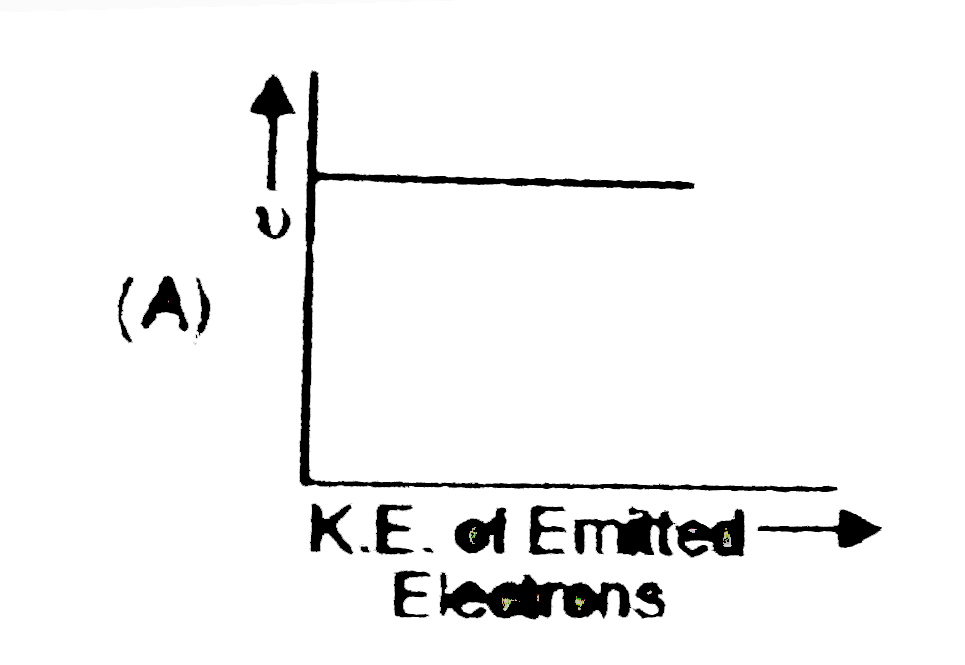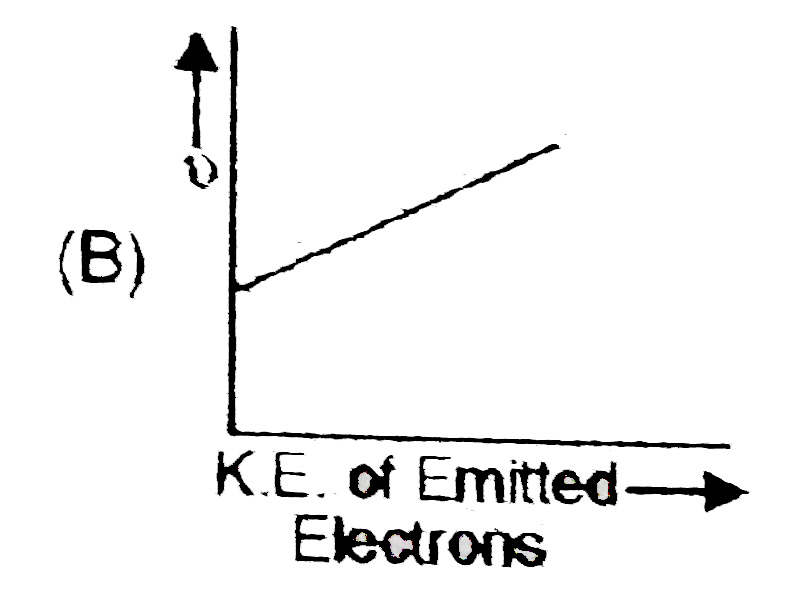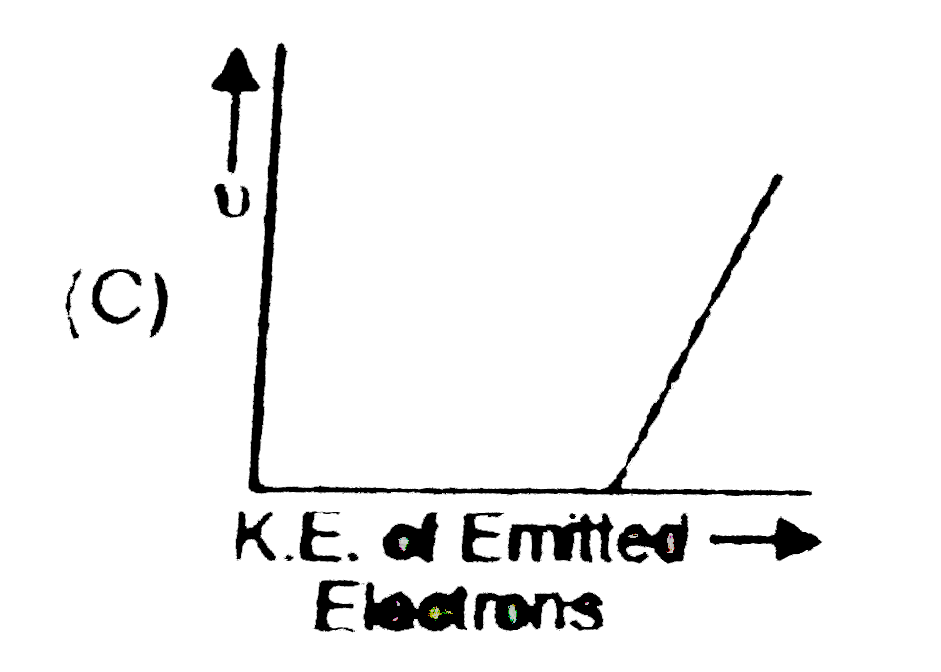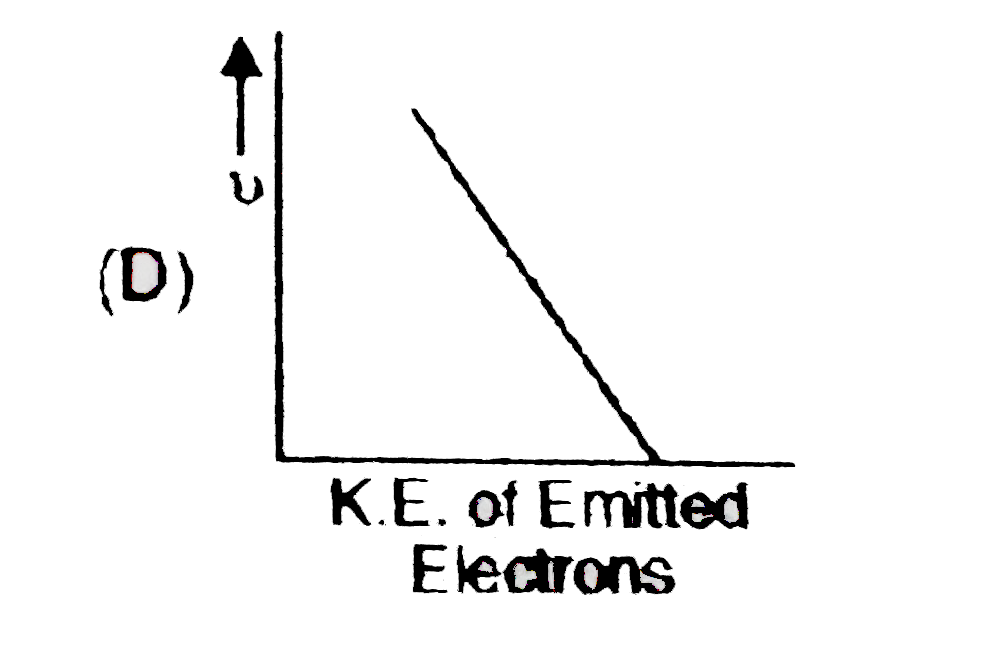Why wave theory of light could not explain the photoelectric effect ? State two reasons. Draw graph between anode potential vs photoelectric current .
Step-by-Step Solution
Step 1: Understanding the Photoelectric Effect
The photoelectric effect refers to the phenomenon where electrons are ejected from a metal surface when it is illuminated by light of sufficient frequency.
Step 2: Limitations of Wave Theory
The wave theory of light could not explain the photoelectric effect due to the following reasons:
1. Immediate Ejection of Electrons: According to wave theory, light is a continuous wave and should take time to impart energy to electrons. However, in the photoelectric effect, electrons are ejected almost instantaneously when light of sufficient frequency strikes the surface. This indicates that light behaves more like a particle (photon) rather than a wave.
2. Threshold Frequency: Wave theory could not explain the existence of a threshold frequency below which no electrons are emitted, regardless of the intensity of the light. Each metal has a specific minimum frequency (threshold frequency) that must be met for photoelectric emission to occur. If the frequency of the incident light is below this threshold, no electrons will be emitted, which contradicts the wave theory that suggests energy should accumulate over time.
Step 3: Drawing the Graph
To illustrate the relationship between anode potential and photoelectric current, we can plot a graph:
- X-axis: Anode Potential (V)
- Y-axis: Photoelectric Current (I)
1. Start with the graph at the origin (0,0).
2. As the anode potential increases from zero, the photoelectric current increases linearly until it reaches a maximum value (I_max).
3. Beyond a certain point, the photoelectric current becomes constant, indicating that all emitted electrons are being collected at the anode, and further increases in potential do not increase the current.
The graph can be represented as follows:
I(Pho→e≤ctricCurrent)∣∣|Imax|______∣∣|/|/|/|⌊_∠____________V(AnodePotential)
The photoelectric effect refers to the phenomenon where electrons are ejected from a metal surface when it is illuminated by light of sufficient frequency.
The wave theory of light could not explain the photoelectric effect due to the following reasons:
To illustrate the relationship between anode potential and photoelectric current, we can plot a graph:
- Y-axis: Photoelectric Current (I)
2. As the anode potential increases from zero, the photoelectric current increases linearly until it reaches a maximum value (I_max).
3. Beyond a certain point, the photoelectric current becomes constant, indicating that all emitted electrons are being collected at the anode, and further increases in potential do not increase the current.
Topper's Solved these Questions
- DUAL NATURE OF MATTER AND RADIATION & ATOMS AND NUCLEIBOOK - CBSE COMPLEMENTARY MATERIALCHAPTER - DUAL NATURE OF MATTER AND RADIATION & ATOMS AND NUCLEIEXERCISE - NUMERICALS
6 Videos
- CBSE EXAMINATION PAPER, DELHI REGION - 2015 (CODE NO. 55/1/1/D)BOOK - CBSE COMPLEMENTARY MATERIALCHAPTER - CBSE EXAMINATION PAPER, DELHI REGION - 2015 (CODE NO. 55/1/1/D)EXERCISE - SECTION E
6 Videos
- ELECTROMAGNETIC WAVES AND OPTICSBOOK - CBSE COMPLEMENTARY MATERIALCHAPTER - ELECTROMAGNETIC WAVES AND OPTICSEXERCISE - 1 mark question
11 Videos
Similar Questions
Why wave theory of light could not explain the photoelectric effect ? State two reasons. Draw graph between Intensity vs photoelectric current.
View SolutionWhy wave theory of light could not explain the photoelectric effect ? State two reasons. Draw graph between frequency ν vs stopping potential V0 .
View Solution
Knowledge Check
Huygen's wave theory of light could not explain
AdiffractionBphotoelectric effectCpolarisationDinterferenceHuygen's wave theory of light could not explain
AdiffractionBphotoelectric effectCpolarisationDinterferenceWhich among the following graphs explains the photoelectric effect?
A B
B C
C D
D
Explain effect of potential on photoelectric current.
View SolutionExplain photoelectric effect Explain the effect of increase of intensity of incident radiations on photoelectrons emitted by a photo-tube.
View SolutionWave nature of light cannot explain photoelectric effect because in photoelectric effect , it is seen that
View SolutionIn a photoelectric effect experiment, the slope of the graph between the stopping potential and the incident frequency will be :
View SolutionIn a photoelectric effect experiment, the slope of the graph between the stopping potential and the incident frequency will be :
View Solution